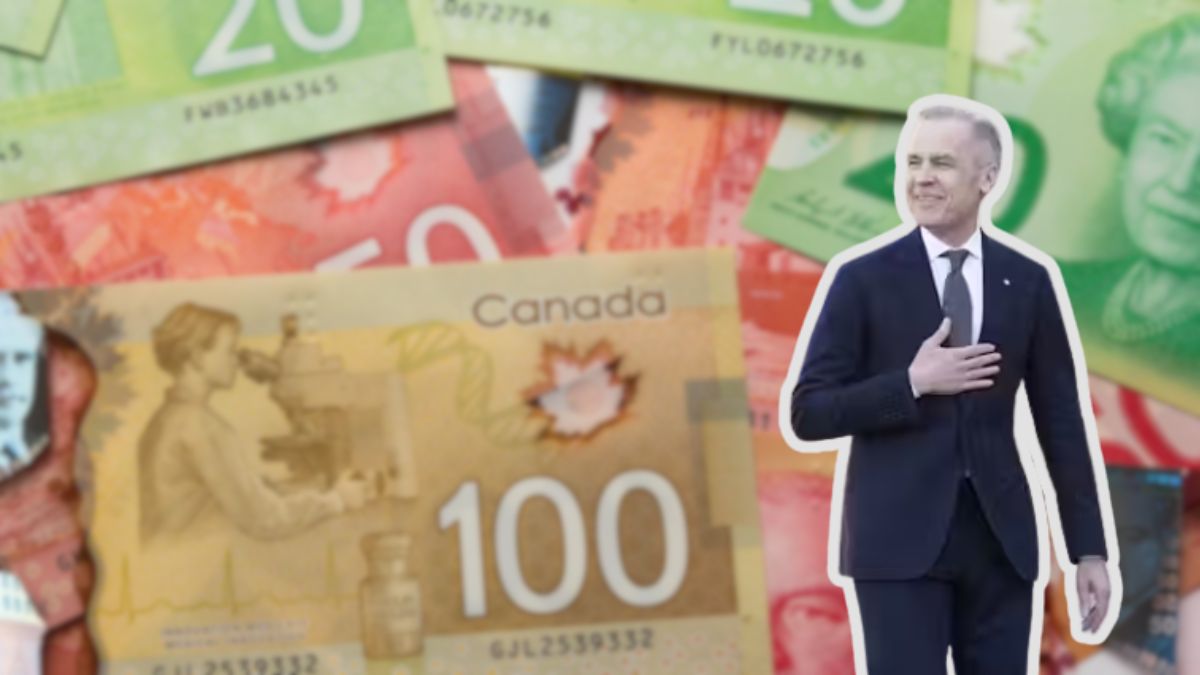With gas prices, heating bills, and grocery costs all pushing higher in 2025, many Canadians are watching their monthly budgets stretch thinner than ever. Now, the federal government is proposing an additional \$500 boost to the Canada Carbon Rebate (CCR)—a move set to put more money back into the pockets of eligible households across the country.
If approved, the increase will apply to the CCR’s quarterly payments starting in 2025, adding meaningful relief to a program already designed to offset the indirect costs of federal carbon pricing policies.
For families in provinces under the federal carbon pricing system, this could mean hundreds of extra dollars a year—on top of what they already receive—without the need to fill out a single application form.
What Is the Canada Carbon Rebate?
The Canada Carbon Rebate (CCR), previously known as the Climate Action Incentive Payment (CAIP), is a tax-free payment issued four times a year by the Canada Revenue Agency (CRA). It was introduced to help Canadians cover the indirect costs associated with carbon pricing—such as higher home heating costs, increased transportation expenses, and fuel price hikes.
The rebate ensures that money collected from the federal carbon tax is returned directly to households, rather than remaining in government coffers. In fact, for most low- and middle-income households, the CCR pays out more than what they spend on carbon taxes annually.
The \$500 Boost – What It Means for You
In 2025, the government plans to increase the CCR by \$500 annually for eligible households. This proposed enhancement would be distributed evenly across the four quarterly payments, meaning a bigger deposit every three months.
For example, a family of four in rural Alberta could see their total rebate rise from roughly \$2,160 per year to over \$2,600—enough to cover several months of grocery bills or winter heating costs.
The additional \$500 is being positioned as a targeted affordability measure to help households manage the dual pressure of inflation and environmental policy costs.
Who Qualifies for the CCR in 2025?
The CCR is not available to everyone in Canada—it’s only paid to residents in provinces where the federal carbon pricing system applies.
Eligibility Requirements:
- Residency: You must be a Canadian tax resident on the date the CRA issues the payment.
- Age: You must be 19 or older, unless you have a spouse/common-law partner or are a parent living with your child.
- Province: You must live in one of these provinces:
- Alberta
- Saskatchewan
- Manitoba
- Ontario
- New Brunswick
- Nova Scotia
- Prince Edward Island
- Newfoundland and Labrador
- Tax Filing: You must file an annual tax return to receive the payment, even if you earned no income.
Residents of British Columbia, Quebec, and the territories are excluded because they operate their own carbon pricing and rebate systems.
How Much Will You Get? – Estimated 2025 Payment Amounts
The size of your CCR payment depends on three main factors:
- Where you live
- The number of people in your household
- Whether you live in a rural area (which qualifies for a 20% supplement)
Example – Alberta (Quarterly Amounts for 2025 Before \$500 Boost)
| Household Member | Quarterly Amount |
|---|---|
| Single Adult | \$225 |
| Spouse/Partner | \$112.50 |
| Each Child (Under 19) | \$56.25 |
Rural Supplement: An additional 20% is added for rural residents to reflect higher transportation and energy needs.
Example:
A rural family of four in Alberta could receive:
- Base rebate: \$540 per quarter
- Rural supplement: +\$90
- Total: \$630 per quarter → \$2,520 annually before the proposed boost.
With the \$500 increase, that total could climb to over \$3,000 annually.
Payment Schedule for 2025
The CCR is paid quarterly on these dates:
- January 15, 2025
- April 15, 2025
- July 15, 2025
- October 15, 2025
If you’re eligible, the CRA will automatically deposit the rebate into your bank account or mail a cheque. Direct deposit is fastest, while mailed cheques can take up to 10 business days to arrive.
How to Ensure You Receive Your CCR Payment
Even though no application is needed, missing payments often comes down to one of three issues:
- Late Tax Filing: File your tax return on time to avoid delays.
- Outdated Information: Keep your address and banking details current with the CRA.
- Unreported Status Changes: Marital status or changes in household composition can affect your payment amount.
Rural Supplement – Why It Exists
The 20% rural supplement is an acknowledgment that residents outside major urban centers face higher energy and transportation costs, often with no access to public transit. Heating large rural homes, driving longer distances, and relying on private vehicles all contribute to higher carbon-related expenses.
Why the Government Is Adding \$500 in 2025
The proposed \$500 boost comes as inflation continues to squeeze Canadian households. According to federal data, the cost of living—especially for energy and food—remains elevated despite slower overall price growth.
Government officials argue that climate policy and affordability can coexist. The CCR, with its annual top-ups, is intended to return more money to most households than they pay in carbon taxes, helping to protect both the environment and family budgets.
Impact on Low- and Middle-Income Households
The CCR disproportionately benefits low- and modest-income households because they typically have lower carbon footprints but still receive the same rebate amounts as higher-income earners. This means they often receive a net financial gain from the program.
With the proposed \$500 boost, that gain becomes even larger—making the CCR one of the few climate policies that is both environmentally motivated and financially beneficial for everyday Canadians.
The Bigger Policy Picture
The CCR is part of Canada’s broader carbon pricing framework, which aims to reduce greenhouse gas emissions by making carbon-intensive activities more expensive, while returning collected funds directly to citizens.
Critics, however, argue that any increase in the rebate undermines the carbon tax’s price signal, while supporters maintain that targeted rebates ensure public support for climate action.
Key Takeaways
- The Canada Carbon Rebate is paid quarterly to eligible households in provinces under the federal carbon pricing system.
- In 2025, a proposed \$500 annual boost could significantly increase payments.
- No application is needed—just file your taxes and ensure your CRA details are current.
- Rural residents receive a 20% supplement to account for higher energy and transportation needs.
- Most households receive more in rebates than they pay in carbon taxes
3 Suspenseful SEO-Friendly Headlines
- Canada’s 2025 Carbon Rebate to Jump by \$500 – See If You’re Getting the Extra Cash
- Quarterly Carbon Payments in 2025 Could Top \$3,000 for Some Families
- Federal Government Plans \$500 Boost to Carbon Rebate – Who Qualifies and How Much You’ll Get
FAQs
Q1: Who qualifies for the \$500 CCR boost?
A: Canadian residents aged 19+ living in eligible provinces under the federal carbon pricing system who file an annual tax return.
Q2: When are the 2025 CCR payment dates?
A: January 15, April 15, July 15, and October 15.
Q3: How much can a single person receive annually?
A: Around \$900 depending on location, before the \$500 boost.
Q4: Do I need to apply for the CCR?
A: No, payments are automatic for eligible tax filers.
Q5: What is the rural supplement?
A: An additional 20% payment for residents of small towns and rural areas to account for higher energy use and transportation costs.










